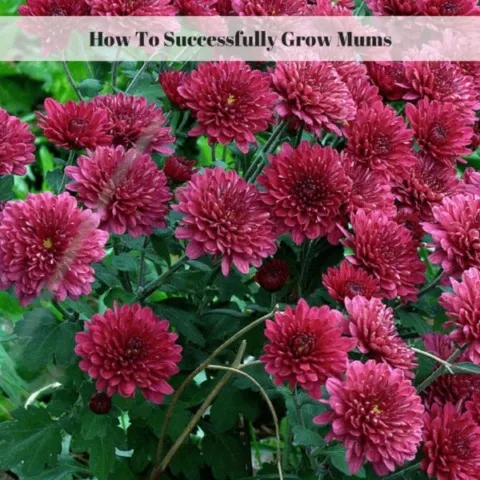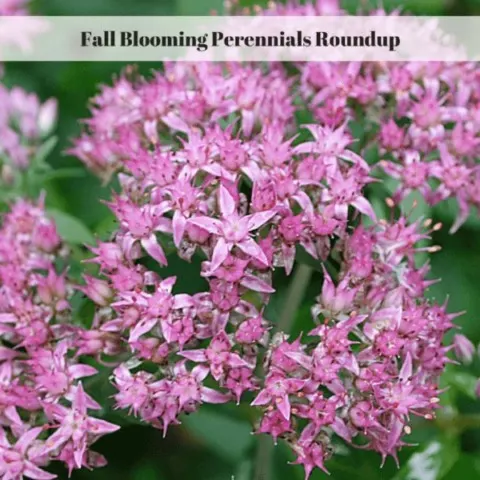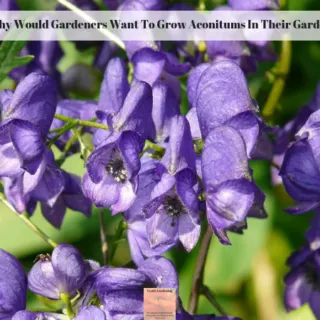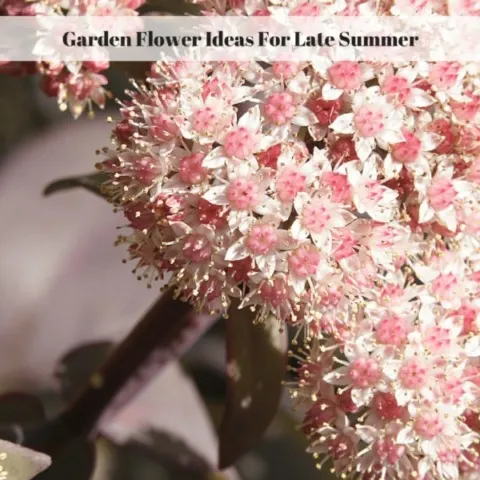You know, fall pruning secrets are a topic close to my heart, and I’m thrilled to dive into it with you.
It’s like giving your plants a little spa day before winter sets in!
Fall pruning is the garden’s best-kept secret, a practice that goes beyond mere tidying up.
It’s a ritual that can transform the health and vigor of your plants.
The benefits are undeniable, and I’m excited to share the ins and outs with you.
As the leaves change colors and the pace of growth slows down, it’s the perfect time to pick up those pruners.
Timing is crucial, and although late September or early October is ideal for most regions, local weather patterns and plant types can influence when you should start.
The art of fall pruning encompasses a variety of plants.
Trees benefit from removing dead branches and shaping, shrubs require careful trimming to maintain their beauty, perennials need a haircut to conserve energy, and roses demand a bit of finesse to dazzle next year.
But it’s not just about when and what to prune; it’s about the technique too.
Clean cuts at a 45-degree angle above a healthy bud or side shoot ensure optimal results, reducing the risk of disease and encouraging new growth in the right direction.
So, let’s embark on this journey through the enchanting world of fall pruning together.
Your garden will thank you come spring!

Why Fall Pruning is a Game-Changer for Plant Health
Fall pruning, my dear fellow garden enthusiasts, is not just a routine garden chore; it’s a secret weapon in the gardener’s arsenal.
Think of it as giving your beloved plants a spa day before the harsh winter settles in.
The benefits are so remarkable that it’s almost like a magical elixir for your garden’s overall health.
One of the most significant advantages of fall pruning is that it sets the stage for your plants to thrive in the coming spring.
It’s not just about tidying up the garden or shaping your plants.
This practice holds the key to ensuring your green companions are not just surviving, but flourishing.
Here’s why fall pruning is an absolute game-changer for plant health:
1. Disease Prevention and Management – First and foremost, pruning in the fall is an essential tool in your arsenal for disease prevention and management. Those dead or diseased branches you snip away? They’re like ticking time bombs of pathogens, waiting to infect your plants. By removing them in the fall, you’re stopping these problems in their tracks. It’s like a preemptive strike to keep your garden healthy.
2. Encouraging Healthy Growth – Fall pruning gives your plants a head start. When you remove dead or damaged branches, you’re directing the plant’s energy toward the healthy parts. This means that come spring, your plants are ready to put their best foot forward with new growth. It’s like giving them a motivational pep talk before their big performance.
3. Better Air Circulation and Light Penetration – Picture this: A well-pruned plant with a thoughtfully structured canopy. The result? Improved air circulation and better light penetration. This not only helps in preventing diseases by reducing moisture buildup but also ensures that every part of the plant gets its share of sunlight, contributing to healthier foliage and more vibrant blooms.
4. Shape and Structure – Fall is the perfect time to shape and structure your plants. By trimming back long, straggly branches, you’re not only enhancing the aesthetic appeal of your garden but also reducing the risk of snow or ice damage during the winter months. It’s like giving your plants a winter coat to keep them warm and snug.
5. Stress Reduction – Yes, even plants can experience stress. Pruning in the fall allows them to shed the unnecessary weight of old or overgrown growth, which can be a stressor during the harsh winter. Think of it as decluttering your garden, allowing your plants to breathe easy and focus their energy on essential tasks like root development.
Now that you understand why fall pruning is a game-changer for plant health, it’s time to delve into the crucial aspect of timing.
Timing is Everything: When to Start Pruning
Knowing the right time to start your fall pruning is like hitting the bullseye.
It’s a balance between giving your plants enough time to recover before the winter chill and ensuring that the job is done when it’s most effective.
Typically, in most regions, the sweet spot for starting fall pruning is late September or early October.
By this time, the leaves have begun their mesmerizing transformation, and the plant’s growth has naturally slowed down.
It’s as if nature herself is giving you the signal that it’s time to get to work.
However, gardening is a game of variables, and local weather conditions and plant types can influence when you should start your fall pruning.
So, it’s essential to keep a watchful eye on your specific garden and the climate in your area.
In colder regions, you might want to start a bit earlier, ensuring that your plants are pruned and ready before the first frost.
On the other hand, if you’re blessed with a milder climate, you might have a bit more flexibility.
In a nutshell, fall pruning is all about syncing with nature’s rhythm.
It’s a chore that, when done at the right time, can yield exceptional results, transforming your garden into a healthier, more vibrant paradise for the coming year.
So, are you ready to embark on this journey of fall pruning and witness the wonders it can do for your garden?
Stay with me as we explore the art and science of pruning various types of plants to perfection.
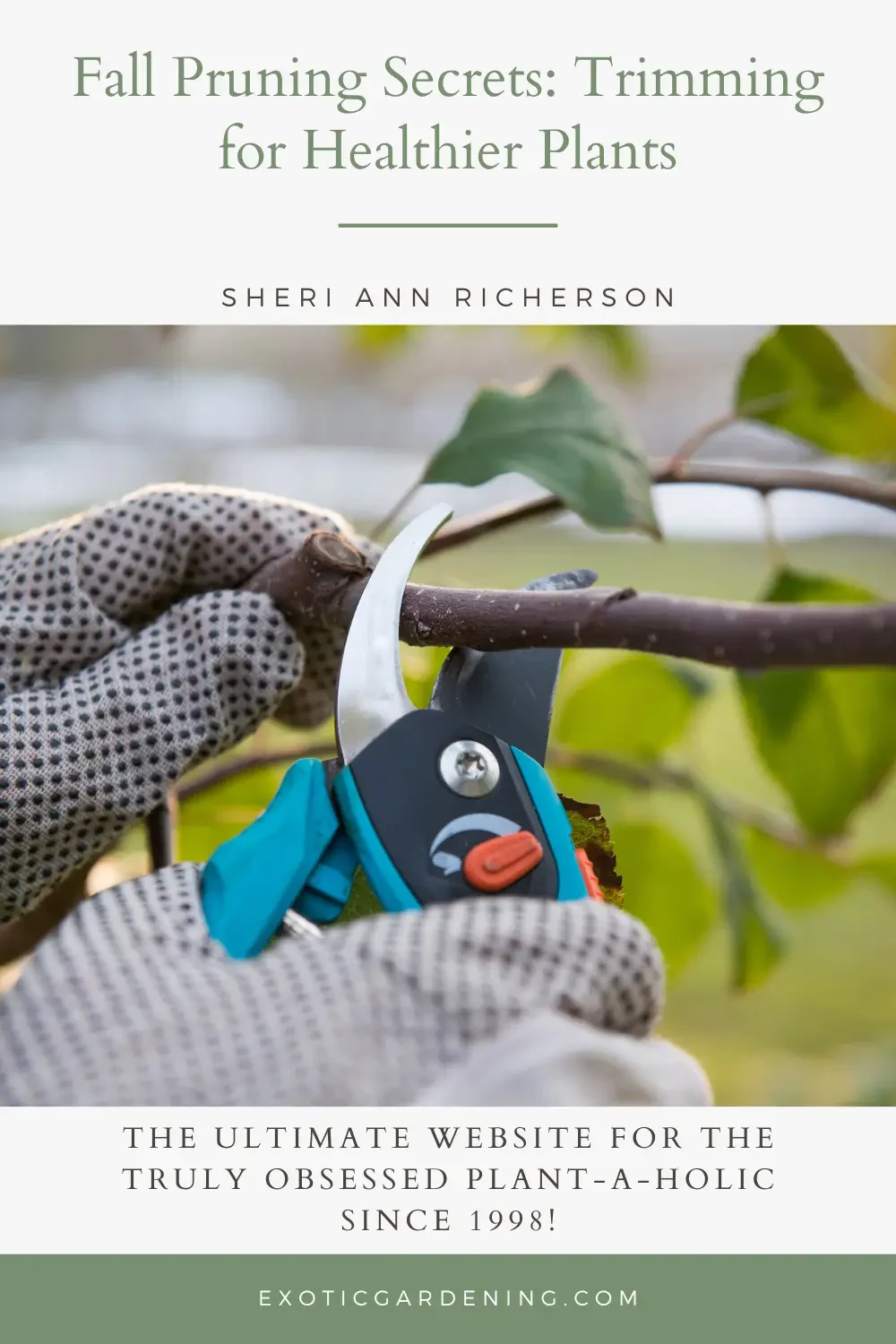
The Art of Pruning Different Types of Plants
Now, let’s dive into the exciting part – how to prune different types of plants!
It’s like unraveling a mystery with each one.
Each plant category has its unique characteristics and requirements, and understanding them is like solving a horticultural puzzle.
Trees: Shaping the Giants
When it comes to trees, you’re taming the giants of your garden.
Pruning these majestic woody giants is about maintaining their health and beauty.
Here’s how to approach it:
- Dead, Diseased, or Broken Branches: Start by removing any dead, diseased, or broken branches. Think of it as performing surgery to save the patient. These decaying branches can harbor diseases and pests, so it’s essential to excise them promptly.
- Improving Shape and Structure: Trim back those long, straggly branches to improve the overall shape and structure of the tree. This helps reduce the risk of storm damage and enhances the aesthetic appeal of your garden. It’s like giving your tree a well-deserved makeover.
- Enhancing Air Circulation and Sunlight: Pruning not only contributes to the tree’s aesthetics but also serves a vital function. By allowing better air circulation and sunlight penetration, you’re creating an environment where diseases have a harder time taking hold. It’s akin to ensuring that your tree can breathe freely and bask in the sun.
Shrubs: Nurturing Diversity
Shrubs come in various shapes and sizes, and each type may need a slightly different pruning approach.
Here’s a brief guide:
- Summer-Flowering Shrubs: For shrubs that bloom in the summer, late fall is the perfect time for a trim. You’ll want to prune them to maintain their shape and size, ensuring that they don’t overshadow other plants. This is like giving them a stylish haircut before the winter season.
- Spring-Flowering Shrubs: On the other hand, spring-flowering shrubs should be pruned after they bloom in the spring. Pruning them in the fall would remove the flower buds, and we certainly don’t want to do that! Once they’ve dazzled you with their blooms, trim away any dead or damaged growth to keep them healthy and happy.
Perennials: The Comeback Kings
Perennials are the plants that keep on giving, year after year.
Pruning them in the fall is all about preparing them for their winter nap and ensuring they return with a burst of vitality in the spring:
- Cutting Back: Give your perennials a haircut by cutting them back to about 3 inches from the ground. This may seem severe, but it’s a fantastic way to conserve their energy during the winter. When spring arrives, they’ll come back with renewed vigor, like a phoenix rising from the ashes.
Roses: The Crown Jewels of the Garden
Ah, roses, the crown jewels of the garden.
Pruning them is a delicate art, and it’s crucial for their health and beauty:
- Reducing Height: In late fall, it’s time to reduce the height of your rose bushes. This not only prevents wind damage during the winter but also keeps them at a manageable size for the coming year.
- Ruthless Pruning: When it comes to roses, you need to be ruthless with dead or diseased canes. Cut them back to healthy wood. This might feel a bit harsh, but it’s a life-saving measure for your beloved roses. Think of it as a spa treatment for royalty.
In conclusion, the art of pruning is like understanding the unique personalities of your plants.
Each category has its quirks, and getting to know them is the key to successful pruning.
So, embrace your pruners, become a plant whisperer, and watch your garden flourish in response to your TLC.
The Power of a Good Pruning Technique
When you’re out there with your pruners, make clean cuts at a 45-degree angle just above a healthy bud or side shoot.
This reduces the risk of disease and encourages new growth in the right direction.
But you know what, I’ve learned over the years that every garden has its unique personality, so don’t be afraid to adapt your pruning techniques accordingly.
Your plants will thank you for the extra TLC!
It’s fascinating how fall pruning is like setting the stage for a grand performance next spring.
The more love and care you give your plants now, the more they’ll shine in the seasons to come.
And remember, the best gardener is the one who never stops learning, so share your thoughts and experiences below.
Let’s keep the conversation growing!
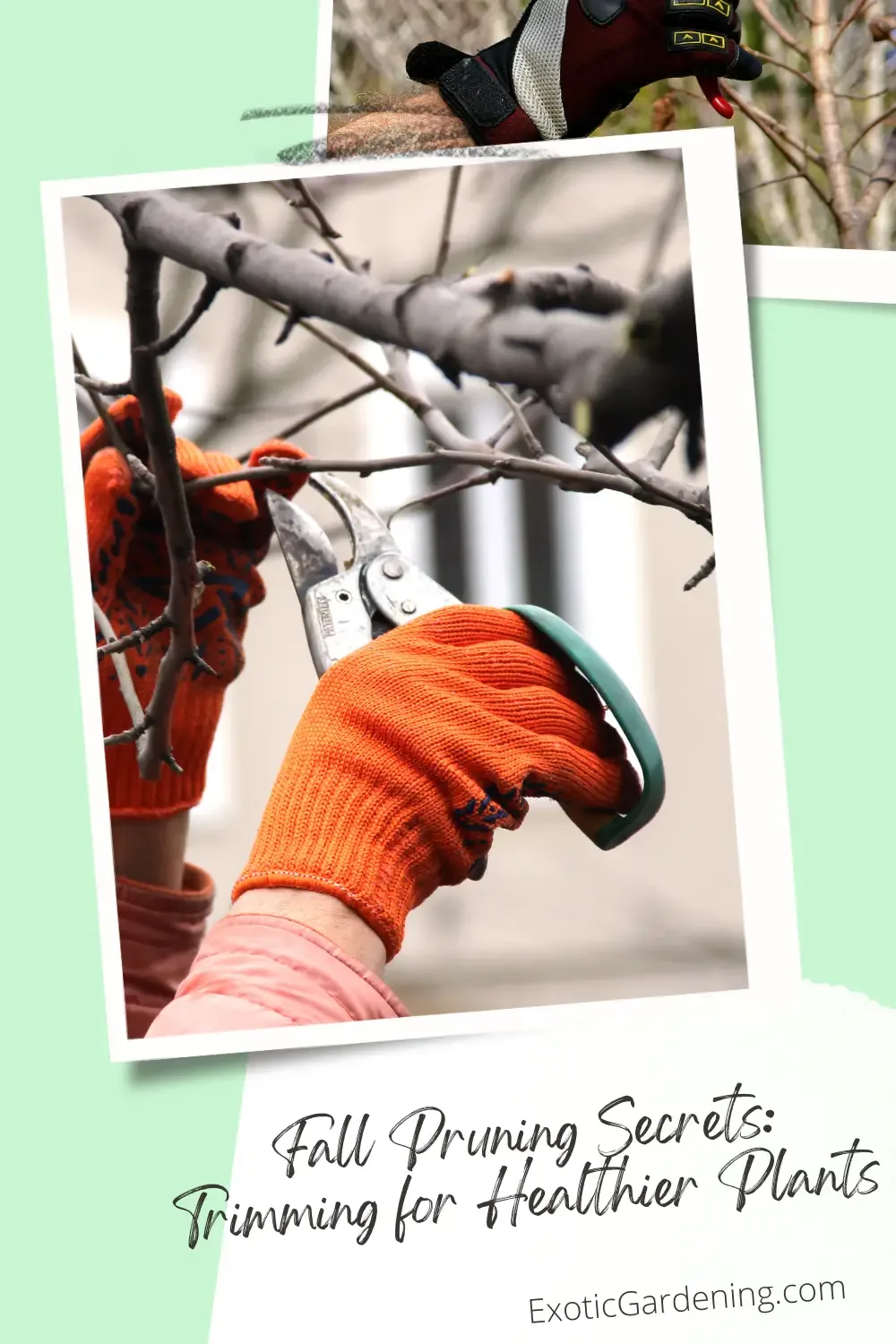
Fall Pruning Techniques and Tips FAQs
Q. When is the best time to start fall pruning?
A. The ideal time for fall pruning is typically in late September or early October when the plant’s growth has slowed down, and the leaves are changing color. However, specific timing may vary based on your local climate and the types of plants you have.
Q. What plants benefit from fall pruning?
A. Trees, shrubs, perennials, and roses are common candidates for fall pruning. Each type has its own specific needs and techniques.
Q. Why is fall pruning important for plant health?
A. Fall pruning is crucial for removing dead or diseased branches, improving air circulation, and encouraging healthy growth. It also helps plants conserve energy over the winter, leading to robust spring growth.
Q. Can I prune all types of trees in the fall?
A. While many trees benefit from fall pruning, some exceptions, like oak trees, are best pruned during their dormant season in winter to prevent oak wilt disease. Always research the specific needs of your tree species.
Q. How much should I prune at once?
A. Avoid removing more than one-third of a plant’s total growth during a single pruning session. Pruning too much at once can stress the plant.
Q. What tools do I need for fall pruning?
A. Essential tools include pruners, loppers, pruning saws, and possibly hedge shears for shaping. Ensure your tools are sharp and clean to make clean cuts and prevent disease transmission.
Q. Can I compost the pruned branches and leaves?
A. Yes, you can compost most pruned material if it’s not diseased. Shredded or chipped branches and leaves can be valuable additions to your compost pile.
Q. Should I apply wound dressing or sealant to pruning cuts?
A. It’s generally not necessary to apply wound dressing to pruning cuts. Trees and plants have their natural healing mechanisms, and sealing cuts can sometimes hinder the process.
Q. How do I prune roses for winter?
A. For roses, prune in late fall to reduce their height, remove dead or diseased canes, and shape the bush. Make clean cuts at a 45-degree angle just above a healthy bud.
Q. Can I prune fruit trees in the fall?
A. It’s usually best to prune fruit trees during late winter or early spring to minimize the risk of winter injury. However, you can remove dead or diseased branches anytime.
Q. Are there specific safety precautions to consider during fall pruning?
A. Safety first! Always wear gloves and protective eyewear when pruning. Be cautious when using ladders and sharp tools, and avoid overreaching.
Q. Can fall pruning prevent pests and diseases in the spring?
A. While fall pruning can help remove potential disease sources, it’s not a guarantee against all pests and diseases. A combination of good garden hygiene and practices is key.
Q. What do I do with the pruned material if it’s diseased?
A. Dispose of diseased pruned material in a way that prevents further contamination. Burning or disposing of it in a municipal yard waste facility is usually recommended.
Q. Should I fertilize after fall pruning?
A. It’s generally not necessary to fertilize immediately after fall pruning. Wait until the spring when plants are actively growing to apply fertilizer.
Q. Can I prune perennials to the ground in the fall?
A. You can cut back perennials to about 3 inches from the ground in the fall to help them conserve energy over the winter. This encourages vigorous growth in the spring.
The Fall Garden
Rainy Days and Your Garden: Managing Watering in the Fall
Discover the art of managing watering in the fall. Tips to prevent overwatering and keep your garden thriving on rainy days.
The Art of Mulching: Protecting Your Plants from Autumn Chill
Discover the secrets of expert mulching in fall. Learn how to protect your plants from the autumn chill with our essential mulching guide.
Crafting Miniature Gardens for Halloween - A Vintage Halloween Tale
Craft Vintage-Inspired Miniature Gardens for Halloween - Spooky Terrariums with Plants and Halloween Decor.
Halloween Horticulture: Plants with Magical Properties for Halloween
Unlock the enchanting world of Halloween with plants with magical properties. Discover their mystical allure in our captivating guide.
Growing Exotic Pumpkin Varieties for a Magical Fall Garden
Discover the allure of exotic pumpkin varieties in your garden for a magical fall. Spice up your harvest with diversity!
Creating a Spooky Halloween Garden: Unveiling Nature's Eerie Allies
Transform your garden into a spooky Halloween haven with eerie insects, enchanting decor, and the magic of nature. Explore now!
Monkshood Flowers for the Fall: A Majestic and Toxic Beauty
There are some late blooming flowers for the fall season such as monkshood. Autumn monkshood is known to bloom from September to November!
Sweet Autumn Clematis: A Garden Treasure
Discover the enchantment of Sweet Autumn Clematis: rapid growth, fragrant blooms, and versatile garden beauty await!
3 Quick Fall Garden Tasks To Do Now
Master your garden's fall cleanup with these 3 essential fall garden tasks. Save time and stress less this season!












